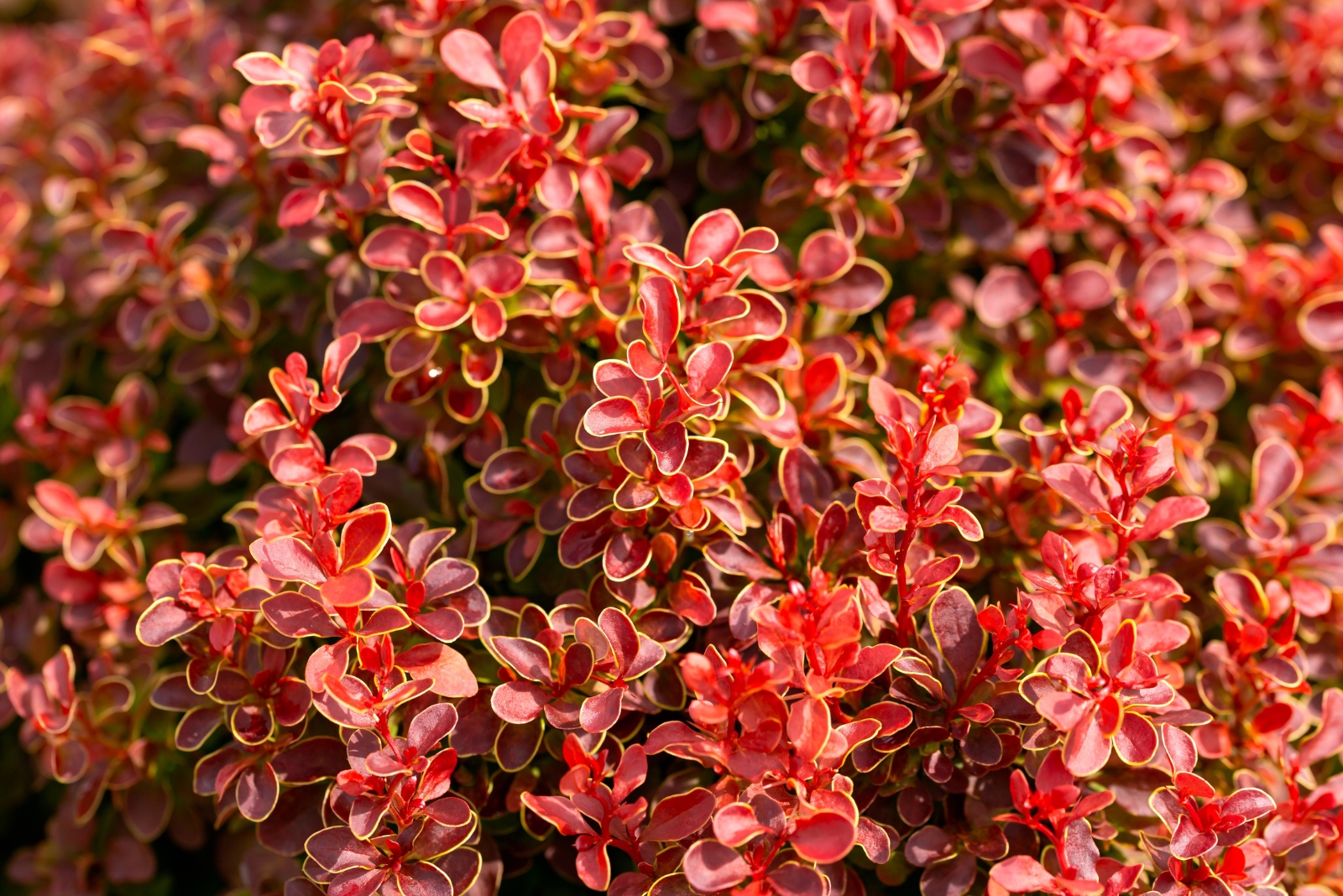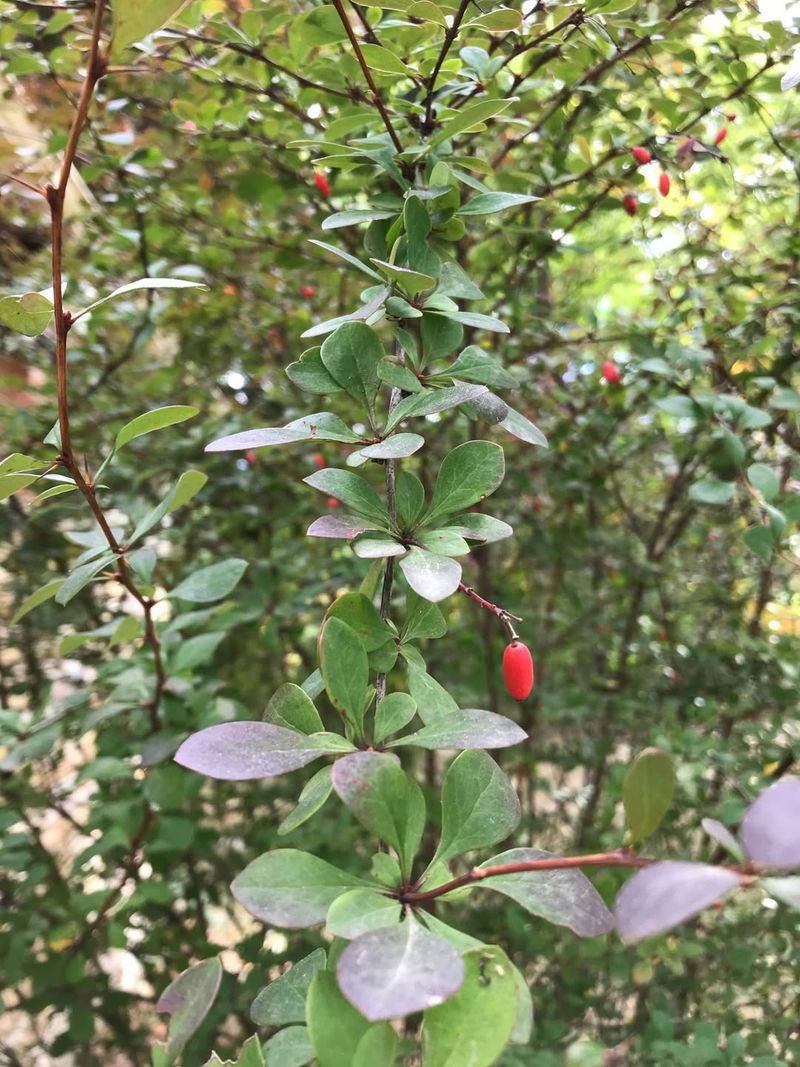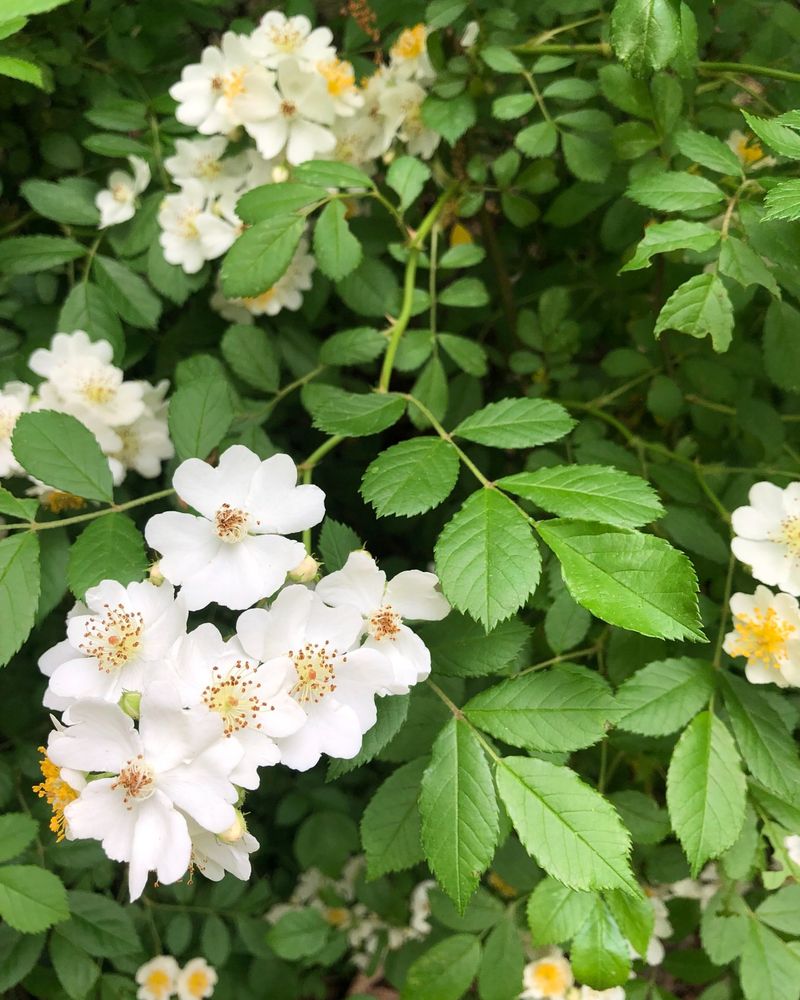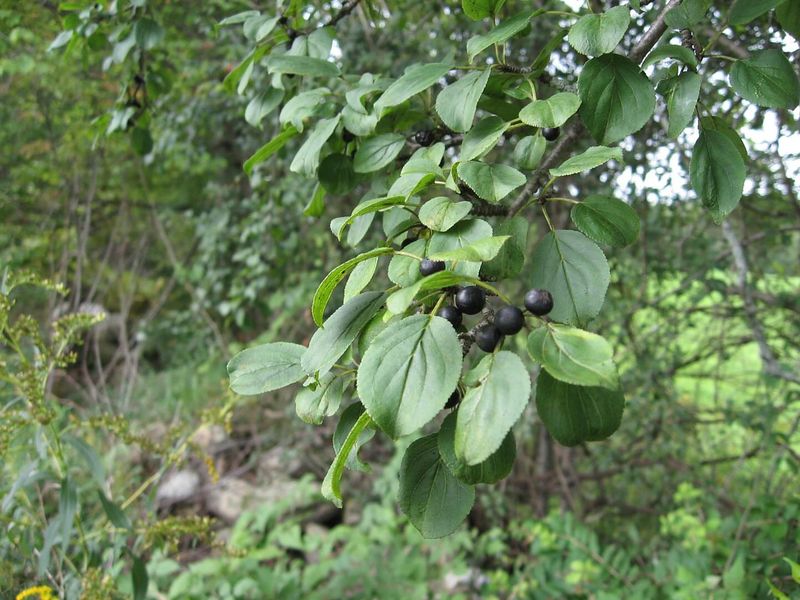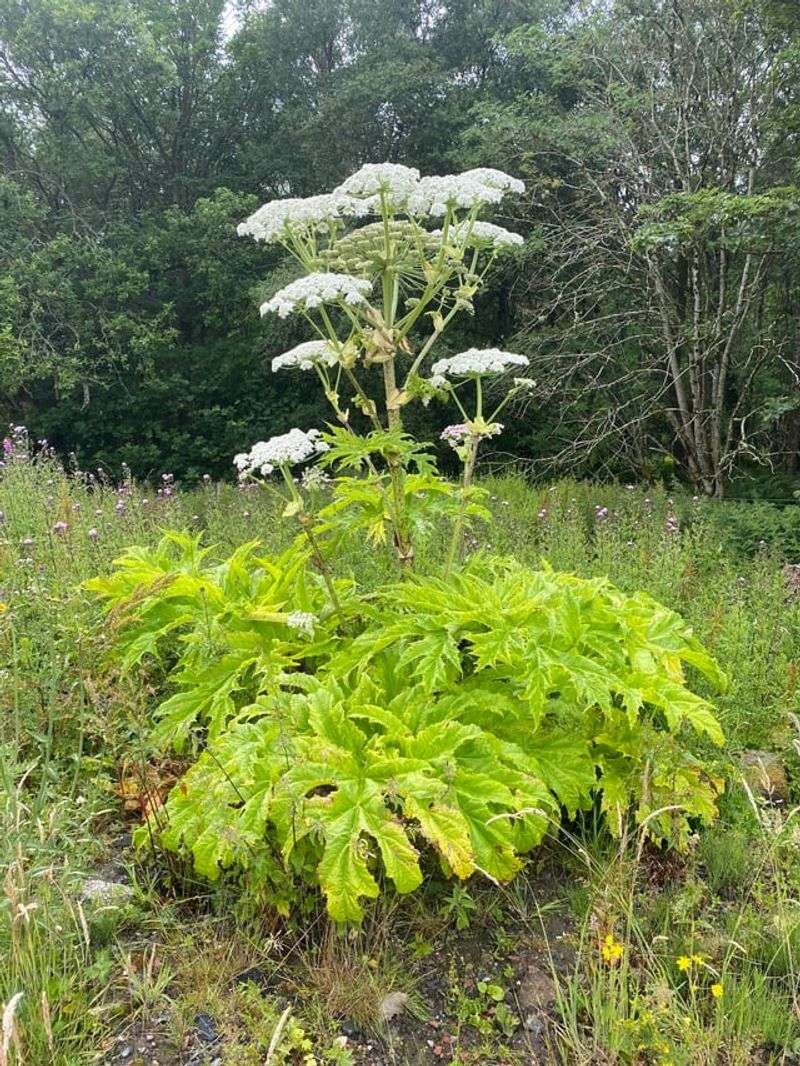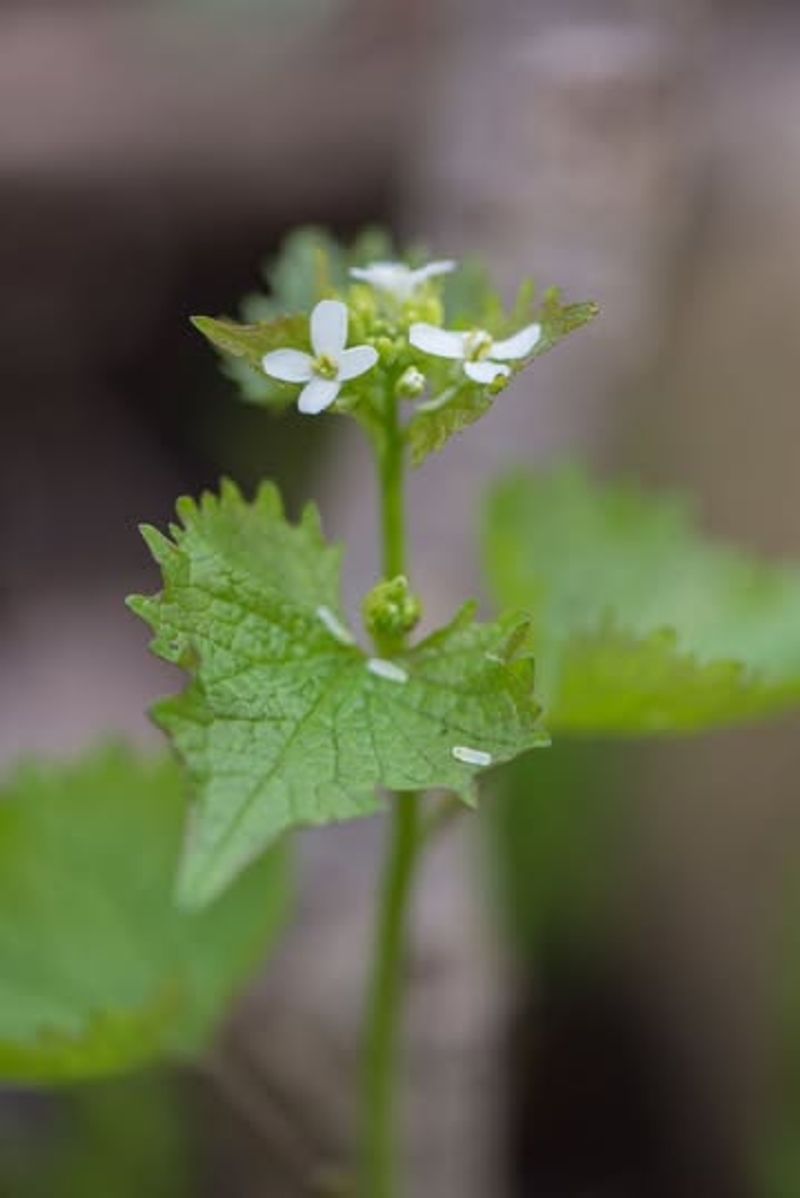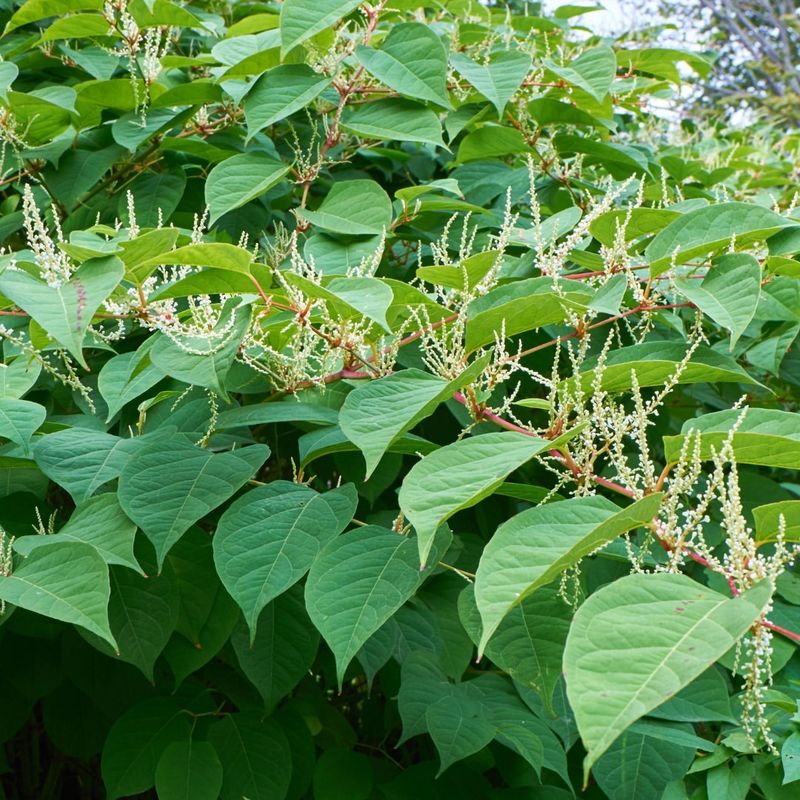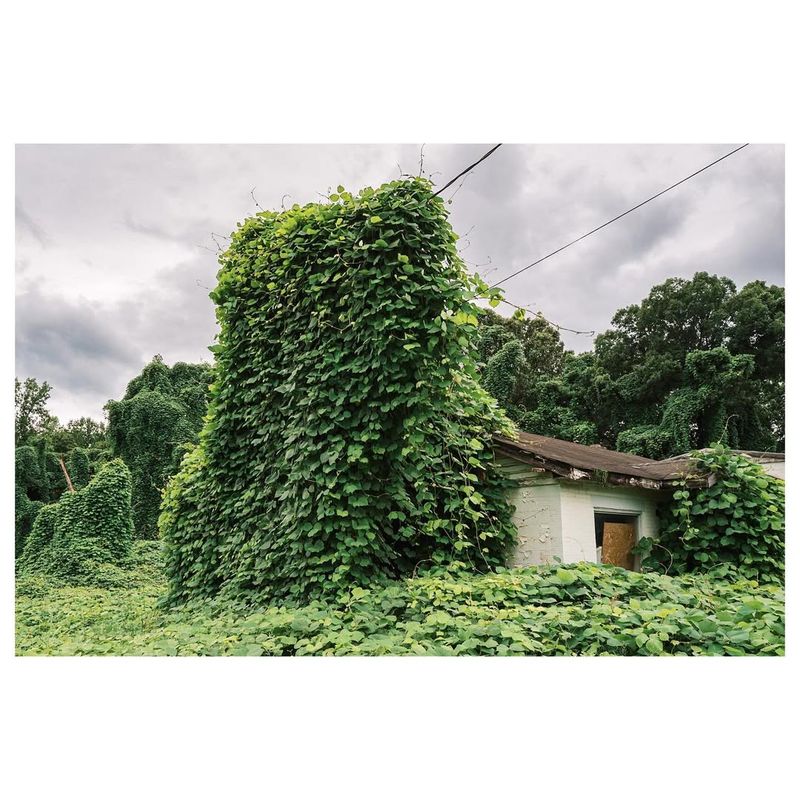Indiana has a list of plants that look perfectly normal until you realize they come with strict movement rules. I’ve stumbled across a few of these in gardens before and was surprised they’re regulated so closely.
Knowing which ones are on that list can save you from fines and a whole lot of hassle. These are the plants you’ll want to keep right where they are.
1. Japanese Barberry
Gardeners often love how this shrub looks with its bright red berries and colorful fall foliage. But Japanese barberry creates dense thickets that crowd out native Indiana plants and provide perfect hiding spots for disease-carrying ticks.
Moving this plant around the state spreads an invasive species that wildlife can’t eat or use for shelter. Indiana officials want to stop its spread because it changes forest floors and makes hiking areas less safe for people enjoying the outdoors.
2. Multiflora Rose
Originally brought to America for erosion control, multiflora rose seemed like a brilliant idea at first. Its thorny branches form impenetrable walls that take over pastures, roadsides, and forest edges throughout Indiana.
Farmers particularly dislike this plant because it reduces grazing land for livestock and injures animals with its sharp thorns. State regulations prohibit moving it because each plant produces thousands of seeds that birds spread everywhere, creating new problem patches across the countryside.
3. Common Buckthorn
Landscapers once planted buckthorn extensively because it grows quickly and forms dense hedges. Unfortunately, this European import aggressively invades Indiana forests, creating shade so thick that nothing else can grow underneath.
Birds eat the berries and deposit seeds everywhere, spreading the problem rapidly across neighborhoods and natural areas. Indiana restricts moving buckthorn because it alters soil chemistry, making it harder for native trees to regenerate and changing entire forest ecosystems permanently.
4. Autumn Olive
Wildlife managers thought autumn olive would provide excellent food and cover for game birds decades ago. Instead, it became one of Indiana’s most troublesome invasive shrubs, forming dense stands along highways and field edges.
The plant fixes nitrogen in soil, which sounds beneficial but actually gives it an unfair advantage over native species. Moving restrictions help prevent its spread to new counties, though birds carrying its abundant red berries continue making control efforts challenging statewide.
5. Giant Hogweed
Giant hogweed isn’t just invasive—it’s genuinely dangerous to people who touch it. The plant’s sap contains chemicals that cause severe burns and blisters when exposed to sunlight, landing people in emergency rooms.
Growing up to fifteen feet tall, this monster crowds out everything around it along Indiana streams and roadsides. State laws strictly prohibit moving giant hogweed because of both its health risks and environmental damage, making it one of the most serious plant threats authorities track.
6. Garlic Mustard
Walk through Indiana woods in spring, and you’ll likely smell this plant before seeing it. Garlic mustard releases chemicals into soil that poison other plants, giving it a huge competitive advantage.
Native wildflowers disappear from forests invaded by this biennial herb, and some butterfly species lose their host plants entirely. Transportation restrictions aim to slow its spread, though seeds stick to boots, pets, and vehicles, making containment frustratingly difficult for land managers.
7. Japanese Knotweed
Nicknamed “the plant that ate the world,” Japanese knotweed grows through asphalt, concrete foundations, and underground utility lines. Its root system spreads thirty feet in all directions, making removal nearly impossible without professional help.
Indiana property owners face thousands of dollars in damage when this plant invades their land. Moving any part of it, even tiny root fragments, is prohibited because new plants sprout from pieces smaller than your fingernail, creating instant infestations.
8. Kudzu
Southerners call kudzu “the vine that ate the South,” and Indiana wants to avoid the same fate. Growing up to a foot per day during summer, this aggressive climber smothers everything it touches, including full-sized trees.
Climate change makes Indiana increasingly suitable for kudzu establishment, raising concerns among environmental officials. Strict movement restrictions help keep this nightmare plant from gaining permanent footholds, though occasional infestations still appear requiring immediate eradication efforts.
9. Spotted Knapweed
Ranchers in western states know spotted knapweed as a rangeland destroyer, and Indiana aims to prevent similar problems. Each plant produces up to forty thousand seeds that remain viable in soil for eight years or more.
Pastures invaded by knapweed provide little nutrition for grazing animals, and the plant’s allelopathic chemicals prevent desirable forage species from growing. Indiana restricts its movement to protect agricultural lands, especially since seeds hitchhike easily on vehicles, clothing, and animal fur.
10. Wild Parsnip
Similar to giant hogweed, wild parsnip contains chemicals that cause painful burns when its sap contacts skin exposed to sunlight. Many hikers and gardeners learn this lesson the hard way, developing severe blisters days after exposure.
Indiana roadsides and ditches increasingly harbor wild parsnip populations that threaten maintenance workers and outdoor enthusiasts. Authorities prohibit moving this plant because controlling existing populations already challenges resource managers, and preventing new infestations saves both money and medical emergencies.

